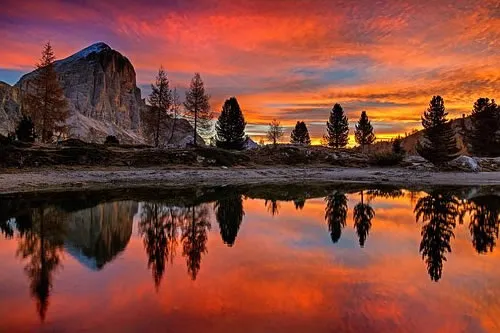
大家帮忙翻译一下这个网站的一篇报道(服装时尚类的)
GEOGRAPHY has always been a convenient form of branding in Manhattan, where Madison Avenue, Broadway and Wall Street are shorthand for career tracks as much as they are addresses.
Multimedia
Video Feature
Finding a Stage
Slide Show
A Big Tent, Moving On
Related
Times Topic: New York Fashion WeekReaders' Comments
Readers shared their thoughts on this article.
Read All Comments (22) »
As the home of New York Fashion Week, Bryant Park is, to much of the world, synonymous with fashion. That is a fitting distinction since its wide-open lawn is also commonly referred to on Seventh Avenue, where famous designers like Donna Karan, Oscar de la Renta and Carolina Herrera have their offices, as the backyard of the garment district. So when the New York catwalks were centralized under a big tent there in 1993, it made a poignant narrative to show the clothes just a couple of blocks from where they were being created.
Sure, there were plenty of people then, as there are now, who thought it was perfectly appalling that a bunch of fashion designers should be allowed to take over just about the only patch of open green space in Midtown for their invitation-only affair. It may not have been obvious why fashion mattered to the thousands of tourists and commuters who walked by each day, irritated by the traffic, excited by the celebrities, bemused by the outfits.
But now, after a prolonged dispute between the designers and the park management, the Fashion Week that begins in Bryant Park today will be the last, before the event moves to Lincoln Center in the fall.
Its entrance, on Avenue of the Americas at 41st Street, is printed with dozens of quotations from designers, editors and publicists, all expressing the belief that showing collectively in Bryant Park is what made New York City a global fashion capital. One from Anna Wintour, the editor of Vogue, hangs over the front door: “Bryant Park became the beacon of what New York fashion stands for — an industry that’s fearless, tireless and always moving forward.”
And yet few have missed the symboli *** that this move away from Bryant Park is happening at a moment when the garment district, from 34th to 40th Streets between Broadway and Ninth Avenue, is in a profound state of decline.
Manufacturers who made their homes there selling buttons, trims, fabrics and threads, making samples, producing dresses and suits in factories along the side streets, have been disappearing at an alarming rate over the last decade. Most of the production of clothes moved to cheaper factories overseas long ago. The recession, and pressure from landlords who want to convert factory buildings into luxury apartments, hotels and office space, has caused more of them to flee the district.
And now go the tents, the most visible image of the work that still goes on in the neighborhood.
“It’s sad that the tents are moving because they do validate the garment center,” said Nanette Lepore, who produces 85 percent of her collection within five blocks of her office. “The tents give you an image of strength.” Ms. Lepore, along with designers like Anna Sui and Yeohlee, have been leading a “Save the Garment District” campaign for more than a year in response to city proposals that would end protective zoning for its manufacturers.
“I love the fact that Bryant Park was where they chose to do the shows because I love the garment center,” Ms. Sui said. “And to this day, we still wheel the racks to the show ourselves.”
Although it was once the largest source of manufacturing jobs in the city (representing more than 200,000 workers in the 1970s), there was little respect then for New York fashion in the rest of the world. Apart from a handful of major brands, very few New York designers had been exposed to an international audience, and hardly any had stores overseas.
That is, not until the designers decided to show their collections together in a central location, as a major media event, as their counterparts in Paris and Milan had done for decades. Their first season, in which virtually every major designer showed in the park, drew coverage from CNN, CBS, NBC, the BBC, VH-1 and MTV. Now organizers of Fashion Week typically receive 3,000 requests for media credentials each season.
“Fashion in the ’80s in New York was still very provincial,” said Stan Herman, the designer who was president of the Council of Fashion Designers of America at the time. “We had designers, but we had no cohesiveness. We were just a way station for fashion.”
The catalyst for banding together was a Michael Kors show, in 1991, in a raw Chelsea loft, when the booming music caused the walls to shake and a big chunk of the ceiling to fall onto the runway, clipping Suzy Menkes, the fashion editor of the International Herald Tribune, on her well-regarded head. She made only brief mention of the incident in her review. But, angered that no one seemed to take it very seriously, she slammed the chaotic disorganization of the New York shows in comments to Women’s Wear Daily.
“She called us second-raters,” Mr. Herman said. “Everybody looked at each other and said, ‘We’ve really got to do something about this.’ She was one of the few editors from Europe who came to America.”
Persuading the designers to show in one place, however, was as much of a challenge as securing the use of the park, a task that fell to Fern Mallis, who was then the executive director of the council and the person widely credited with conceiving the event. She described a meeting at which several young but reluctant designers kept asking whether Calvin Klein had agreed to show there. Mr. Klein happened to be in the room and announced his support.
“This was the most important thing we could do for our industry,” Ms. Mallis said. “It was the right moment for American fashion.” But Ms. Mallis has also faced critici *** .
As the event grew larger, from 42 shows under 2 tents and inside the New York Public Library in 1993 to more than 65 in 3 tents this season (hundreds more designers show independently), corporate sponsorship took on more prominence. Sponsors like Mercedes-Benz, Olympus, General Motors, M.A.C., Evian, Fiji, Dunkin’ Donuts, McDonald’s, Delta, the Bermuda Department of Touri *** and Kohler, the toilet maker, paid handsomely to feature their products and messages in the limelight of Fashion Week. In 2001, the fashion council sold its runway operations to IMG, the global marketing company. That, in turn, led to sniping that Fashion Week had come to resemble a trade show, or a car dealership. Many of New York’s marquee designers now show their collections elsewhere.
THE complaints may be somewhat unfair. What is not often noted is how closely the explosion of marketing noise around Fashion Week mirrored the increasing globalization and corporate slickness of fashion itself over the last two decades. Without a lot of money and marketing behind them, it is harder for new designers to construct and produce a *** all collection on their own. “It’s important to maintain the dream that it is possible to become a designer,” Ms. Sui said. “But how do you do that? The only thing that made it possible for me was that I had accessibility to this area and really figured out my resources.” If the local button-makers and fabric suppliers and factories all close, she said, “everything cannot just be available over the Internet.”
Can Lincoln Center, already associated with so many things besides fashion, ever give fashion designers the same sense of belonging as did Bryant Park? It bothers many of them no end that their craft is perceived a lesser (if not the least) form of art, that the costume galleries at the Metropolitan Museum of Art are in the basement, or that an appreciation of style is often remarked upon as a liability to politicians, athletes and intellectuals.
Designers are making the best of it.
“When you think of Lincoln Center, you think of the arts, the music, the dance and the opera, so I think being there will elevate and celebrate fashion as an art,” said Donna Karan, who happened to be the very first designer to have a runway show in Bryant Park when the tents opened on Halloween in 1993. Many of her peers, in interviews and in the comments plastered on the front of the tents, repeated the belief that Lincoln Center will legitimize them, not just as designers, but as artists.
Not one of them mentioned that the new location is home to another seasonal event that takes place under a big tent, one that is perhaps an even more apt metaphor for Fashion Week.
That is, of course, the Big Apple Circus.
地理一直是在曼哈顿麦迪逊大街的地方,百老汇和华尔街的职业速记品牌方便的形式尽可能多首曲目,因为他们的地址。
多媒体
视频功能
寻找一个舞台
幻灯片放映
一个大帐篷,移动论
有关
时代主题:纽约时装WeekReaders的评论
这篇文章的读者分享他们的想法。
阅读全部评论(22)»
作为纽约时装周的家,布莱恩特公园,为大部分的世界中,时尚的代名词。这是因为其广泛的开放式草坪也经常提到的第七大道,到那里就像唐娜卡兰,奥斯卡德拉伦塔和卡罗莱纳埃雷拉著名设计师他们的办公室,装修的区别作为服装区后院。因此,当纽约模特是一个大帐篷下在1993年有集中的,它提出了尖锐的叙述,以显示他们是从那里正在创建的衣服只有几个街区。
当然,有很多人当时,因为现在,谁认为这是一个非常令人震惊的是一堆的时装设计师应该允许拍照只是公开在市中心区绿地的邀请,只只修补过的事情。它可能不会有明显的原因时装显然将影响到成千上万的游客和乘客谁走过每一天,由交通恼火,由名人,困惑兴奋的服装。
但现在,经过与设计师和公园管理长期争端,时装周,在布赖恩特公园从今天开始将是最后一次,在活动前移至林肯中心在秋季。
它的大门,在第41街的美洲大道,是印有几十个设计师的报价,编辑和所有集体表示相信,在布赖恩特公园展示的是什么使纽约市的全球时尚之都宣传员。从安娜温图尔,在时尚的编辑,一个挂在门口:“布赖恩特公园成为灯塔什么纽约时装代表 - 一产业的无畏,不知疲倦,永远前进。”
然而,很少有人错过了这个象征意义,脱离布莱恩特公园是在一个时刻发生在服装区,从第34至第40和第九届大街之间的百老汇街,在一个深刻的衰退状态。
谁制造了自己的家园有卖纽扣,花边,布料,线打样,生产服装和西服工厂沿着小街,已消失在过去10年的惊人速度。服装生产的大部分转移到海外的工厂早就便宜。经济衰退,并从业主谁想要转化为豪华公寓,酒店和写字楼厂房的压力,造成他们逃离该地区更多。
现在走帐篷,该工作照常进行在附近最明显的形象。
“这是可悲的帐篷,因为他们正在做验证的服装中心,”说纳内特莱波雷,谁制造了她收集了她的办公室在5块百分之85。 “这些帐篷给您力量的形象。”莱波雷女士,以及像安娜苏和Yeohlee设计师,一直在领导一个“拯救制衣区”的一年多运动,针对城市的建议,将结束保护区划其制造商。
“我爱布赖恩特公园的事实是,他们选择这样做的节目,因为我热爱服装中心,”隋女士说。 “为了这一天,我们仍然车轮的机架来显示自己。”
虽然它曾经是城市的代表在20多万工人在20世纪70年代(制造就业机会的更大来源),很少有尊重纽约在世界各地的时装然后。除了极少数的大品牌,很少纽约设计师已经暴露在国际观众,几乎没有任何有商店海外。
也就是说,直到显示的设计者决定在中心位置的 *** 在一起,作为一个大型的宣传活动,因为他们的同行在巴黎和米兰进行了几十年。他们的之一个赛季,其中几乎所有主要设计师在公园发现,吸引了来自美国有线新闻网报道,哥伦比亚广播公司,全国广播公司,英国广播公司,VH - 1等和MTV。现在,时装周的组织者通常会收到3000媒体凭据每个赛季的请求。
“在80年代在纽约时装仍然非常省,”斯坦赫尔曼说,设计师谁当时的美国时装设计师协会会长。 “我们的设计师,但我们没有凝聚力。我们只是一个时尚中途站。“
为联合起来的催化剂是迈克尔科尔斯显示,在1991年,在原切尔西阁楼,在音乐的蓬勃发展所造成的震动和墙壁的天花板大块下降到跑道上,剪报苏茜门克斯,时尚主编国际先驱论坛报,对她很好,把头部。她只对在事件中简要地提到她的审查。但是,似乎激怒了,没有人采取非常认真,她撞上了纽约混乱的混乱表明女装日报的评论。
“她叫我们第二评价者,”Herman先生说。 “大家面面相觑,说:'我们真的必须做的事情。'她是谁从欧洲到美国的少数几个编辑器之一。”
说服设计师显示在一个地方,然而,作为一个为确保公园的使用,一个任务,下降到弗恩Mallis,谁当时安理会的执行董事和广泛的人设想的许多挑战记事件。她描述了一个会议,会上几位年轻的设计师一直在问,但不愿卡尔文克莱是否已同意以显示那里。克莱因先生正好在房间里,并宣布他的支持。
“这是最重要的事情,我们能为我们的行业,”Mallis女士说。 “这是为美国时尚时机。”但Mallis女士也面临批评。
随着事件越积越多,从42显示的2顶帐篷和内部纽约公共图书馆在1993年超过65本赛季在三顶帐篷(数以百计的独立设计师展示),企业赞助了更多的重视。赞助商如奔驰,奥林巴斯,通用汽车,陆委会,依云,斐济,邓肯甜甜圈,麦当劳,三角洲,旅游和科勒,马桶制造商支付丰厚的地域特色的时尚风头他们的产品和信息,百慕大部周。 2001年,时装理事会出售其跑道运作,IMG公司,全球营销公司。这反过来又导致了狙击的时装周已经到了像一个贸易展,或汽车经销商。纽约的大牌设计师展示他们的收藏现在许多其他地方。
投诉可能有点不公平。什么是不经常注意的是如何紧密地围绕时装周的营销噪声爆炸镜像,在过去二十年的日益全球化和企业本身的时尚华而不实。如果没有金钱和营销背后的很多,现在是进行新的设计和生产难度,构建自己的一个小 *** 。他说:“重要的是要保持梦想,有可能成为一名设计师,”隋女士说。 “但是你怎么做呢?唯一使我有可能是我更容易了解这一领域,真正找到了我的资源。如果本地按钮,制造商和面料供应商和工厂都关闭时,她说“,”一切都不能只可在互联网。“
可以林肯中心,除了已经与时尚相关的许多事情,不断给时装设计师对属于同一布赖恩特公园一样的感觉?这其中许多烦恼,他们的船是没有知觉结束较小(如果不是至少)形式的艺术,这在大都会艺术博物馆服装馆是在地下室,或欣赏的风格是常说的后一个政治家的责任,运动员和知识分子。
设计师们更大限度地利用它更好的。
“当你觉得林肯中心,你认为艺术,音乐,舞蹈和歌剧,所以我觉得在那里庆祝会提升和时尚作为一种艺术,说:”唐娜卡兰,谁正好是之一个设计师有一个在布赖恩特公园跑道表明,当帐篷在万圣节开幕于1993年。她的许多同龄人,在采访中对帐篷前贴的意见,反复相信林肯中心将合法化,他们不仅是设计师,但是,作为艺术家。
没有一个人提到的新的位置是家庭到另一个季节性事件,需要下大帐篷,一个is或许是时装周更贴切的比喻more地方。
也就是说,当然,大苹果马戏团。
英语词汇麻将解析:麻将中英文术语
Mahjong (/mɑːˈʒɒŋ/ mah-ZHONG) is a tile-based game that originated in China during the Qing dynasty. It is commonly played by four players (with some three-player variations found in South Korea andJapan). The game and its regional variants are widely played throughout Eastern and South Eastern Asia and have a *** all following in Western countries. Similar to the Western card game rummy, Mahjong is a game of skill, strategy, and calculation and involves a degree of chance.
The game is played with a set of 144 tiles based on Chinese characters and symbols, although some regional variations may omit some tiles and/or add unique tiles. In most variations, each player begins by receiving 13 tiles. In turn players draw and discard tiles until they complete a legal hand using the 14th drawn tile to form 4 melds (or sets) and a pair (eye). A player can also win with a *** all class of special hands. There are fairly standard rules about how a piece is drawn, how a piece is robbed from another player, the use of simples (numbered tiles) and honors (winds and dragons), the kinds of melds allowed, how to deal the tiles and the order of play. Despite these similarities, there are many regional variations to the rules including rather different scoring systems, criteria for legal winning hands and even private table rules which distinguish some variations as notably different styles of mahjong.
Every Monday and Thursday afternoon in Bryant Park, one of most illustrious public places in downtown New York City, the clink of intricate tiles and ignited outbursts from drawing an unlucky piece can only mean one tantalizing game: mahjong. Mahjong, originated in China about 150 years ago, is a fascinating, gin rummy-like game played with tiles rather than cards. The game has evolved to become a popular American pastime since it was first introduced to the U.S. in early 1920s.
每周一和周四下午,在坐落于纽约曼哈顿市中心的布莱恩特公园,伴随着麻将牌的碰撞声和人群中爆发的阵阵吆喝声,麻将牌友们纵横捭阖、大杀四方。起源于中国的.麻将于 20 世纪 20 年代传入美国,现在已成为受美国人欢迎的消遣方式。
"We play with a card, a mahjong card," Linda Fisher, Bryant Park's mahjong area organizer, explained major differences between Chinese and American/Jewish style of the game.
记者看到,美国人打麻将,都会在桌边放一张小卡片。" 这是美国麻将联盟发布的年度美式麻将规则卡," 布莱恩特公园的麻将区组织者琳达 · 费希尔向记者介绍中国麻将和美式麻将的区别。
Traditional Chinese mahjong sets have 144 tiles, while American version is played with eight additional joker tiles and score cards that are published annually by non-profit organizations like National Mahjong League. And every year the card changes just to keep it interesting, so they have to match the patterns on the card instead of making the kinds of Pengs and Kangs and Ches that the other styles of mahjong (have). So the scoring's different.
传统中国麻将有 144 张牌,而美国麻将还另有 8 张鬼牌(百搭牌)。费希尔说,与中国麻将固有的 " 碰 "" 杠 "" 吃 " 打法不同,美国麻将联盟每年更换麻将规则卡,列出新的可以得分、赢牌的麻将组合,以保持其趣味性。
【(公众号:英语学习)】
本文为原创文章,版权归作者所有,未经授权不得转载!
一座位于纽约曼哈顿最中心地带的公寓,其奢华让人叹为观止!
布莱恩特公寓位于美国纽约曼哈顿区,是全世界人口最稠密、经济最繁荣的地方之一,居住在此,如同生活在世界的十字路口,被繁华环绕。
如果要为寸土寸金、高楼林立这类字眼找一个代名词, 纽约曼哈顿 必定会成为更佳选择之一,这里的车水马龙与繁华不夜天,充斥在影视作品、杂志画刊、和世人的无尽想象里。
位于曼哈顿中城区的 BRYANT PARK 被誉为城市公园复兴的终极范例,在市民心目中,它是仅次于中央公园的城市绿地。纽约公共图书馆矗立在长方形草坪的尽头,平日里的布莱恩特公园恬静闲散,到了每年的纽约时装周,便又成为了镁光灯聚集的时尚圣地。
而布莱恩特公寓的建造之处是曼哈顿中城区仅存的一块风水宝地,周围聚集了纽约几乎所有的摩天大厦以及奢华商业区,与美国最繁忙的交通枢纽中央车站也仅一街之隔。
步行几个街区便可到达帝国大厦、苹果门店等曼哈顿地标建筑。
正如《欲望都市》中的时髦女郎们生活的场景,曼哈顿中城区的街头 处处弥漫着时尚与前卫的气息 ,宝格丽、蒂凡尼、华伦天奴等品牌门店及奢侈品商场Bergdorf goodman就静静地隐藏在某个街角。
布莱恩特公园闹中取静,精致的特色餐饮与生鲜大卖场距离公寓也仅一步之遥,这里是纽约式生活的更佳写照。
大卫·奇普菲尔德向来不追求“奇观”式的建筑外观,作为一名 崇尚极简主义的建筑大师 ,他成功克服了周遭现有的建筑与绿化景观的掣肘,将布莱恩特公寓完美融入到了发展已极度成熟的曼哈顿市中心,使建筑在城市的夹缝中和谐生长。
与其他耀眼的玻璃塔楼相比, 布莱恩特公寓的水磨石外立面 显得低调却不失设计感,这种更为环保且具有亲和力的古老材质近年来大有复辟的趋势。
这座34层的公寓除了底层的酒店外还包含了57套豪华住宅,不同的楼层都可观赏到不同的城市景观,31层以上便可 将纽约的天际线尽收眼底 。
公寓的1至15层为精品酒店,15层以上的业主则可享受由酒店物业提供的 *** 、健身、洗衣、餐饮等服务。被精美大理石包围的私人大厅休息区对业主24小时全天候开放。
纽约曼哈顿,这里被称作世界的十字路口,当人们抬头仰望耸立天际的帝国大厦,视线便会经过此处,布莱恩特公寓的云端生活。









